This was published 6 months ago
‘I’m angry’: Lily was 17 when her baby was taken. Now, she’s asking the UN to help
Young, unwed and vulnerable, an estimated 150,000 mothers were coerced into giving up their babies for adoption mid-last century. In 2013, they received a federal government apology. Now they want justice – and one is taking the fight all the way to the UN.
By Megan Norris
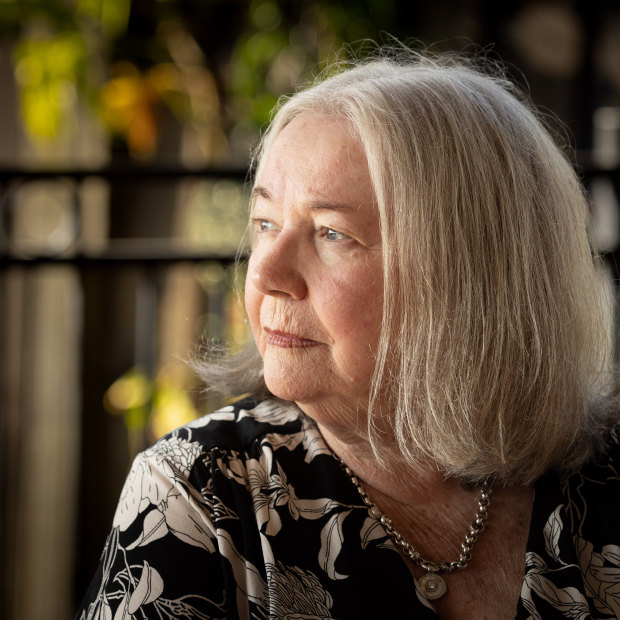
Lily Arthur, now 74, has spent decades fighting for justice. When she was pregnant at 16, “my arrest had been unlawful, my detainment illegal, and the forced removal of my child a crime”.Credit: Paul Harris
The walls of Lily Arthur’s comfortable home on Queensland’s Gold Coast are a colourful montage of paintings and photographs. They capture her rich Anglo-Irish-Jewish heritage, the achievements of her various grandchildren, and her holidays on the kind of luxury cruises popular among Baby Boomers with healthy nest eggs and the time to enjoy them.
But it’s the handful of grainy black-and-white snaps spread across the kitchen table that perhaps matter the most to her. “I felt suicidal the first time I saw these photographs,” says Arthur, showing me a faded sepia picture of her 12-week-old son on his christening day. His smile is for another mother’s camera – that of his adoptive mother. It was the first in a lifetime of missed milestones the feisty, 74-year-old Arthur will take to her grave.
While the suffering of Australia’s stolen generations has been publicly acknowledged as part of the nation’s dark history, Arthur’s photo collection sheds light on another, less talked-about generation of children also taken from their parents – those that young, unmarried mothers were forced to give up for adoption, often via fraud and other illegal means, in the middle decades of the 20th century. In 2013, the then prime minister Julia Gillard made global history with a national apology to these mothers – and all victims of this practice. State governments, some churches and hospitals also apologised for their involvement.
Gillard committed the government to helping families affected by these practices. But adoption advocates argue that despite this year’s announcement from the Victorian government of $138 million in reparations to 3500 women whose babies were taken by the state, and some individual payouts given by various churches and charitable trusts, tens of thousands of other Australian victims have not yet seen a cent in recompense for their loss.
Having exhausted legal avenues in Australia, and with time running out for these now elderly women, Arthur has taken their case to a United Nations body in Geneva, arguing that the forced removal of their babies and the suffering they subsequently endured was a violation of their human rights. With Scotland, Wales and Ireland having followed our national apology with apologies of their own, the world will be watching to see the outcome of this potentially precedent-setting UN case.
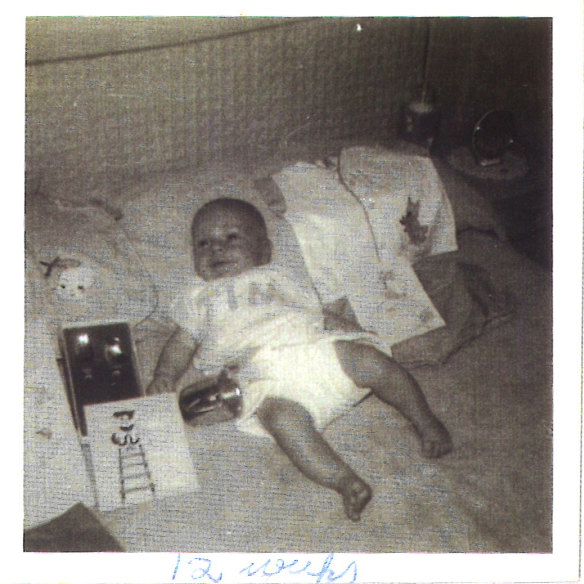
The baby that Lily Arthur, then 17, was coerced into giving up.Credit: Courtesy of Lily Arthur
“I want the federal and state governments to come clean and take responsibility for the destruction they caused to people’s lives and to provide redress for the suffering of victims of forced adoption,” Arthur says. “We have been jumping up and down about this for 30 years, and they just keep sweeping it under the carpet. They knew what they were doing – hopefully this will shame them into action.”
Lily Arthur’s son was one of an estimated 150,000 newborn Australian babies who were unwillingly surrendered for adoption between 1940 and the late 1980s. The traumatic experience later led her to run for local politics, inspiring her to campaign for justice for the victims of forced adoption. She is now the CEO of Origins Supporting People Separated by Adoption (Origins SPSA), an advocacy and support group formed in 1995. “Now, when I wonder, ‘Why me?’ ” she says of this work, “I think it’s because I was strong enough to fight back.”
Her nightmare began in February 1967, when police, acting on an anonymous tip-off, arrived at the flat in Brisbane’s Rocklea that she shared with her 20-year-old fiancé, Steve Benko, and hauled her off to jail because she was unmarried and six weeks pregnant. In an era when single mothers were treated with disdain and the Infant Life Protection Act 1905 mandated that every “illegitimate” birth in Queensland had to be reported to the authorities, Arthur and her unborn baby were already on the radar of the Queensland Department of Children’s Services. “Someone at the factory where I worked as a junior sewing machinist must have reported me because a couple of days earlier, I’d been fired by the boss when he discovered I was expecting,” recalls Arthur, who was a month away from her 17th birthday.
“I had no idea what I’d done,” she adds, recalling how she’d recently relinquished the room she’d rented on the other side of Rocklea to move in with Benko, a musician who’d asked her to marry him. “I’d been living independently for two years by then; my mother and stepfather had just moved to Sydney with my seven younger siblings, leaving myself and my older sister Jenny in Brisbane, where we had jobs and lives.”
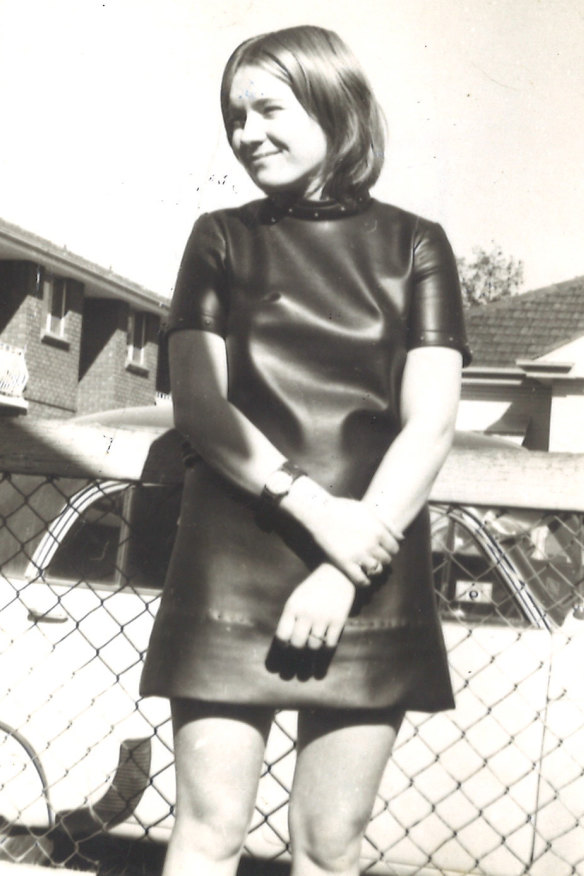
Arthur at 17 in 1968, after her baby was taken for adoption.Credit: Courtesy of Lily Arthur
After a terrifying night in a city lock-up, Arthur appeared before the Children’s Court in Brisbane, after which she was remanded to the Holy Cross Retreat for “wayward” girls. She spent the next four days locked in an empty dormitory during the day while the authorities made half-hearted attempts to locate her mother; her biological father had recently been jailed for eight months for stabbing her stepfather.
Meanwhile, Benko had travelled to Sydney to find Arthur’s mother and secure her consent for a special marriage licence that would set Arthur free. He found her mother in a caravan park in Canley Vale in Sydney’s west: she’d not been contacted about her daughter’s incarceration and immediately signed the licence. By now Arthur, deemed in moral danger, had returned to court. She was ordered to be detained at the home as a ward of the state.
‘My baby was whisked away before I could see him and hidden in the hospital nursery where, unknown to me, the paperwork had been drawn up for his adoption.’
Lily Arthur
When Benko returned five days later, her name had been changed to Leanne and she’d been put to work in the Magdalene Laundry alongside Holy Cross. “They changed everyone’s names, so nobody knew who anyone was,” explains Arthur. She recalls one of the girls telling her that her boyfriend and sister had come to the home and were speaking to the nuns. The Sisters of Mercy had refused to let Benko in, and he left the marriage licence with them for Arthur to sign. “I was so relieved when they called me into the office to sign the form my mum had signed, and I realised Steve had been to Sydney and was trying to get me out.” Instead, the Mother Superior kept the licence, blocking all Benko’s requests to visit and intercepting their mail. “I reached a point where I realised nobody was coming to get me, though I’d no idea why.” Arthur spent her pregnancy working in the laundry for 30 cents’ worth of lollies a week.
On September 1, 1967, Arthur’s labour began, and she was rushed to what was then called the Brisbane Women’s Hospital, where she was shackled to a bed. “I was forced to lie on my side with one leg in a stirrup and the other pulled behind me, screaming in agony because I thought they’d broken my back,” she recalls. “My baby was whisked away before I could see him and hidden in the hospital nursery where, unknown to me, the paperwork had been drawn up for his adoption.”
After eight agonising days of Arthur’s pleading for her baby, a social worker from the Department of Children’s Services arrived at the hospital’s so-called “heartbreak ward” with adoption papers for Arthur to sign. When she refused, she was told she’d be detained at the home until she turned 18 and that her son would grow up in foster care. “The social worker said I’d spend the next five years fighting to get him back – by which time his father would have moved on, and he’d grow up hating me for taking him from the only family he’d ever known.”
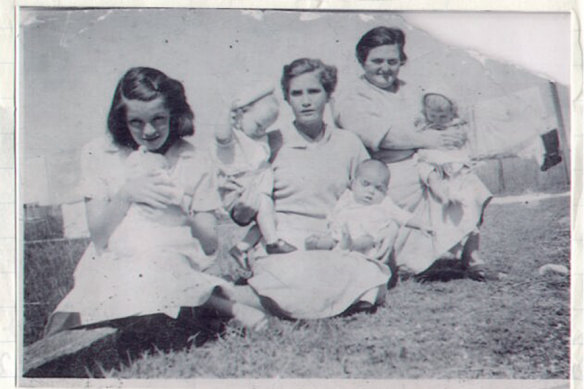
Nurses and babies at Brisbane’s Holy Cross Retreat, where Arthur was held.
The intimidation continued with the social worker threatening to send her to Karrala House, a detention centre for “uncontrollable” girls at Ipswich Mental Hospital in Brisbane’s west. The heavily sedated Arthur signed, though she has no idea what drugs she’d been given because her medical records were later destroyed, and she was then discharged. “Before I left, they let me see my son, but only through the nursery window,” she recalls, her voice wavering. “He was so tiny, with lots of fair hair, and I named him Shane Stephan after his Ukrainian father.”
Arthur’s hopes of being reunited with Benko and finding their son were dashed in late October that year, when she was put on a plane to her mother, now living in Canley Heights in Sydney’s west. Within weeks, Arthur had found a job at a local lighting factory, where she began dating a colleague, who asked her to marry him. “We were married on October 26, 1968 – exactly a year to the day of my release,” she says. Her husband was, alas, infertile and abusive, so he could never give her the second baby she so dearly wanted. In 1971 she left him, returning to Brisbane to look for the only man she’d ever loved. “I was shattered to hear he’d just got married, and I ended up having a meaningless fling, which left me pregnant.” She returned to Sydney and her husband.
Sadly, the birth of daughter Amanda in 1972 saw her reliving her earlier nightmare. “After she was born, the nurses wouldn’t let me see her, and it was only when my husband came in two days later and demanded to see the baby that they gave her to me,” she says. Aware of Arthur’s previous “illegitimate” child, they’d deemed her an unfit mother. “I later discovered Amanda had been earmarked for adoption, too.”

Arthur with her second baby, Amanda.Credit: Courtesy of Lily Arthur
The legalisation of abortion and the introduction of the contraceptive pill in the 1970s saw a decline in the number of babies available for adoption, though some forced adoption continued through the late 1980s. By this time, Arthur had found Benko’s name in the Brisbane telephone directory and called him. “It was unreal hearing his voice after all these years, and we agreed to meet in Brisbane – I guess it was unfinished business,” she says. “He was now separated and had four kids, and though the old spark was still there, I think we both knew we’d never be more than good friends.”
Lily Arthur’s story is just one of 400 accounts of heartbreak and loss that now retired family court justice Nahum Mushin recorded between 2010 and 2012 as chair of the reference group reporting to the federal government’s 2012 parliamentary inquiry into historic forced adoption policies and practices. “I travelled around Australia four times, visiting every state and territory, interviewing the victims of forced adoption, including many unmarried mothers and girls who had been separated from their babies,” he tells Good Weekend.
The inquiry heard stories of mothers who’d given birth shackled to beds, with sheets or pillows over their faces to prevent them bonding with babies which, unbeknown to them, had been marked for adoption. In an age when single mothers were deemed promiscuous and unfit, they were punished and judged by medical staff and shunned by the community. Stories emerged about unmarried women being denied pain relief during long, agonising labours, and being forced to return without their newborns to maternity wards filled with married mothers and babies.
Mothers shared chilling recollections of being told their newborns were dead, unaware they’d been offered to married mothers of stillborn babies in a practice known as “rapid adoption”. One mother recalled being sedated in labour at Sydney’s Crown Street Hospital and waking up in the Lady Wakehurst Home for unmarried mothers in nearby Waverley, where she was told her baby had been stillborn. “I was so drugged up I couldn’t remember having a baby,” she stated in her submission. Days later, still drugged, she was handed some “discharge” papers to sign. Nearly 30 years later, a young man knocked on her door saying he was her son; she realised the papers she’d signed had been adoption papers.
A former nurse described a doctor at Vaucluse Private Hospital telling single mothers that their babies had died, while secretly exchanging them for the stillborn infants of married women and swapping their names on birth certificates. Another nurse at an unnamed private hospital recalled a doctor giving a single mother’s baby to one of his patients who’d had multiple stillbirths. “I imagine that was not an adoption … that was just a substitution,” she stated in her submission.
The inquiry highlighted other areas of medical malpractice, including unmarried women being routinely overdosed on barbiturates, antipsychotics, potent painkillers and sedatives, particularly during the adoption process, to make them more pliable. Another mother at Sydney’s Crown Street Hospital recalled asking the nurse during her agonising labour how long she had to go. She was told to “shut up and get on with it” and gave birth two hours later with blankets piled on her face. She was immediately injected with the lactation suppressant diethylstilboestrol (DES) and dosed with antipsychotics and barbiturates.
The inquiry heard reports of cases of unmarried mothers being administered DES in “exceedingly high doses”, sometimes three times higher than the recommended amount. Yet archived records revealed the health department had been warned in the late 1960s that the drug – a synthetic oestrogen – had been linked to fertility issues, breast and rare vaginal cancers when given during pregnancy. Introduced in the late 1930s to combat miscarriage, it was withdrawn as a miscarriage drug in 1971, but continued to be used to suppress lactation. In its findings, the inquiry determined that past forced adoption policies and practices had been “unethical, immoral and often illegal”.
While many health professionals maintain DES posed no risk to the health of mothers given DES as a lactation suppressant, a recent WA parliamentary inquiry into forced adoption was not convinced. In its findings, released in August, it noted that the carcinogenic potency of a drug “without any known safe level” was important when considering the possible health risks associated with its usage as a lactation suppressant. Research continues to see what health problems might arise in the DES-exposed population over time. Origins SPSA would like victims of forced adoption to be included.
Brisbane mother-of-four Linda Bryant is just one of the mothers who developed cervical cancer after the forced adoption of her baby. Bryant recalls that when she was diagnosed in 1981, 14 years after the Central Queensland birth, her doctors made no connection between the life-threatening condition and the drug she’d been given without her consent at 21.
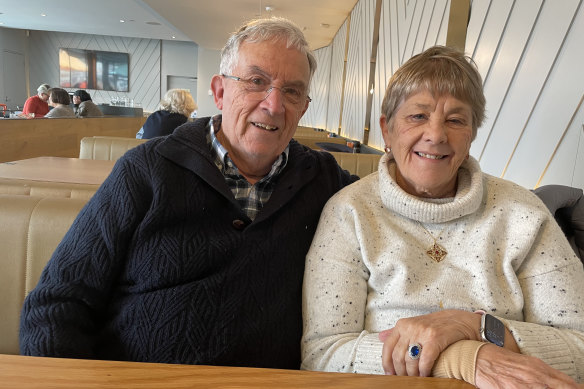
Linda Bryant with Professor Nahum Mushin, who interviewed 400 victims of forced adoptions.Credit: Courtesy of Linda Bryant
“I’m assuming they didn’t know,” says Bryant, who began to suspect a link to the drug after Origins undertook nationwide surveys to determine how many forced adoption victims had been diagnosed with breast and gynaecological cancers after receiving DES as a lactation suppressant. Of the 120 mothers surveyed in NSW alone, 80 per cent had those cancers.
“I’ve been to too many funerals of friends who have died of breast or gynaecological cancers who were given stilboestrol [DES] to dry up their milk before being forced to give their babies up for adoption,” reflects Bryant.
Now cancer-free, she sits on her patio in the winter sunshine, reflecting on that fateful night in January 1967 when she was admitted to Mackay Hospital, unaware her unborn baby had been earmarked for adoption since her first prenatal visit. “I was taken to the maternity ward in labour and left without pain relief, crying in pain,” she recalls. Later, a doctor stitching her up joked to one of the nurses: “I should just put a zipper in for next time.” She adds, “When I timidly asked him the sex of my child he told me, ‘You had a girl and no, you can’t see her because she’s marked for adoption.’ ”
‘He pounded his fists on the table, saying: “Girlie, this is the second time I’ve been here and you will sign.” ’
Linda Bryant
During the afternoon, her partner arrived and was shocked to find his newborn daughter in a side room with a nurse guarding her. “She refused to let him in so he pushed past, and the nurse called security, who made him leave and threatened to have him arrested for assault.”
While Bryant was pleading for her baby, the hospital social worker came by to pressure her to adopt out the baby, telling her she was “stupid” for putting her own interests above her child’s future wellbeing. A few days later, a male social worker arrived with adoption forms and stormed out when Bryant refused to sign. “The next day I was given an injection and remembered nothing for days afterwards,” she says. Two weeks after Bryant had given birth, the social worker returned. “He handed me a clipboard with a sheet of blank paper covering a form, with only the signature space visible,” Bryant says. “He refused to let me read the form or tell me the contents, and when I refused to sign them he pounded his fists on the table, saying: ‘Girlie, this is the second time I’ve been here, and you will sign.’ I was so groggy from the drugs and so distressed, I signed them.“
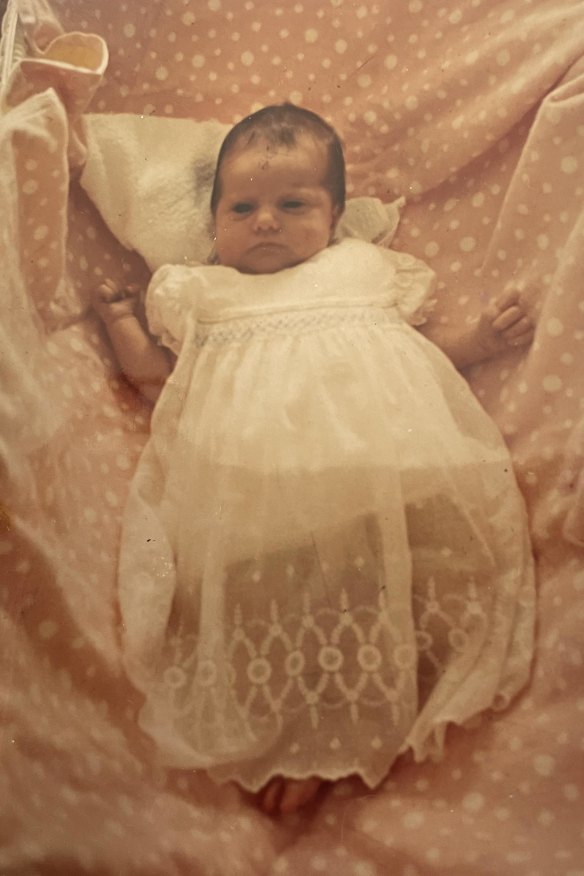
Linda Bryant’s daughter, who was adopted out against her wishes.Credit: Courtesy of Linda Bryant
Later that day, she noticed staff dressing a tiny baby at the nurses’ station for a waiting couple and instinctively knew it was her daughter. “I ran over screaming and banging on the window. The staff held me back as the woman followed her husband and their little boy out to the car and drove away with my daughter.”
Bryant was discharged later that day without paperwork to show she’d ever been there. “I was told [by the social workers and the nurses] not to tell anyone what had happened because no decent man wanted second-hand goods,” she recalls, becoming teary. “I was so traumatised, I told my baby’s father I couldn’t marry him because he was a physical reminder of everything I’d lost.”
Within the year, Bryant had married another man, though it took her another four years to conceive, which her doctors blamed on trauma. “In my heart, I believed I was being punished and didn’t deserve another baby,” she explains, her strict Methodist beliefs at the time compounding her guilt and shame.
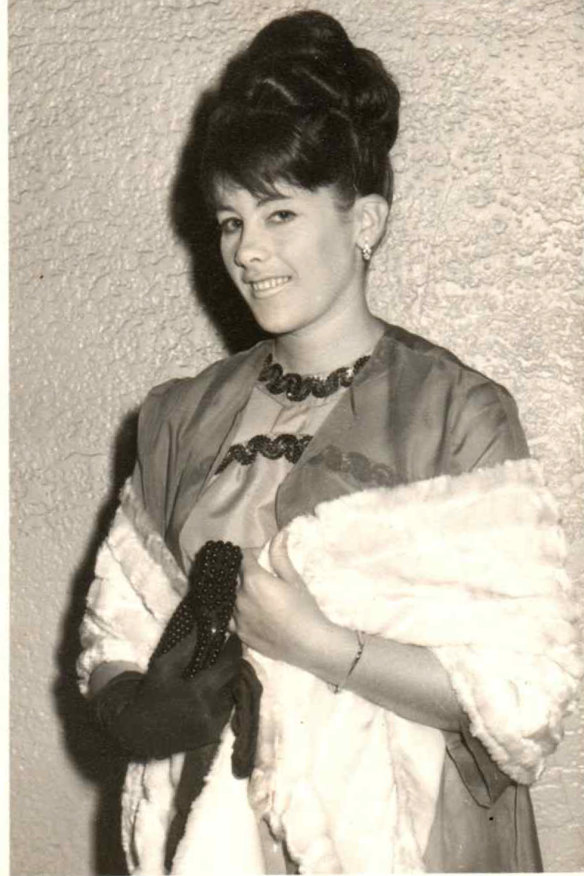
Linda Bryant in her early 20s.Credit: Courtesy of Linda Bryant
Like Lily Arthur, the birth of Bryant’s daughter, Simone, in 1971, reactivated her trauma: when her baby failed to thrive, she again imagined she was being punished and that her newborn was dying. “I had several surgeries on my cervix to cut away the cancer and during my two later pregnancies, I had to have it stitched, so I could carry my babies to term.” While Bryant’s children did flourish, her marriage of 20 years ended in divorce. “I became a volunteer for adoption support agency Jigsaw and later Origins, where I met Lily [Arthur],” she explains. “I was in and out of counselling and my two youngest daughters grew up being dragged around meetings and marches with a mother who never stopped grieving for the child she’d lost.”
While Bryant was campaigning for justice in Queensland, Arthur had divorced and remarried and was on a crusade to find her son. With the encouragement of her new husband, Des, she embarked on a law degree. “That’s when I discovered the age of consent in Queensland in 1967 was 16.” She’d been 16 at the time she got pregnant, “meaning my arrest had been unlawful, my detainment illegal, and the forced removal of my child a crime”.
In 1997, Arthur met with the director of Children’s Services Queensland and was stunned to be told that her son was a “dead identity”. “The slate had been wiped clean the day he was stolen and with a new identity, he would be impossible to find.” Undeterred, she trawled old hospital, court, primary school enrolment and Brisbane electoral roll records. In April 1998, she finally tracked him down to Caboolture on the Sunshine Coast. “He’d been renamed Tim and was living close to where my mother now lived, so Des drove me there,” she says. “I dropped off a scrapbook of family photographs I’d made for when I found him, to explain where he came from, and told his wife that if I’d got the wrong Tim, I’d call around later and collect it. The following day he called me saying, ‘You can stop looking – you’ve found me.’ ”
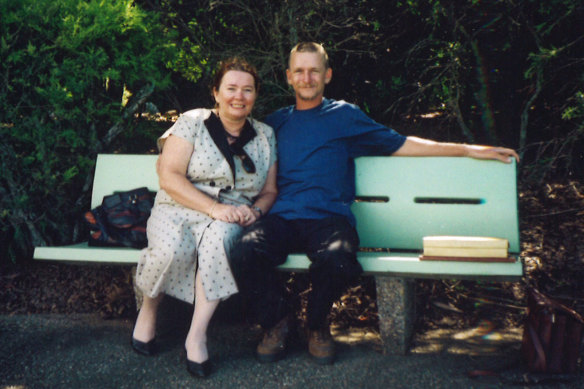
Lily Arthur’s reunion with son Tim in a Sunshine Coast park.Credit: Courtesy of Lily Arthur
Their reunion at a local park was both painful and exhilarating. “All these years I’d been searching for a baby and when I finally found him he was a grown man with children of his own.” Steve Benko, reflecting on his own reunion with Tim a few months later, described the experience as “mind-blowing”.
Meanwhile, Bryant, with the help of Jigsaw, had found her daughter, who was then a young adult living in NSW. “She wrote to me saying she knew she was adopted and had had a happy childhood but had no interest in meeting me,” she explains. She later received a phone call from her daughter’s adoptive mother, who was stunned when Bryant described the blue dress she’d been wearing the day they took her baby away. To Bryant, though, that memory was as fresh as ever. “I’ve replayed that scene like a video for so many years I’ll never forget it – it haunts me.”
Lily Arthur and Linda Bryant have built happy lives with their new children and grandchildren, but time has not healed the pain of loss, and they have other biological grandchildren who are strangers to them. Accessing government documents such as medical records, birth certificates and adoption consent forms continues to be a source of frustration and anger. “Records have been supposedly destroyed or lost, and those that do exist have had names omitted or deliberately misreported in an attempt to hide what they did to us,” Arthur says.
All this has contributed to what Sydney psychiatrist and adoption expert Dr Geoff Rickarby describes as “aggravated pathological grief”. While some were victims of rape, the majority were young mothers who’d become pregnant to first boyfriends because of their ignorance of sex and contraception. Yet a “false myth” about their sexuality – that they were promiscuous – had been used to take their babies away. Says Bryant: “I later discovered my baby had not been taken from me because I was unfit, but because there was a demand for girl babies for adoption in NSW in 1967.”
The demand was so great at that time that a Queensland politician denounced the illegal trafficking of babies to interstate families, claiming the practice was open to financial exploitation. Years later, stories surfaced about the matron of a Brisbane home who’d been selling the newborns of unmarried mothers in her care for £50 each. “So while they claimed adoption was in the child’s best interests, it was really about the money,” Arthur says scathingly. “The state made money from the adoption fees and saved a fortune in welfare payments which we were never told we were entitled to. Worse still, they provided babies to order.”
It is this terrible injustice that Arthur has spent two decades fighting to expose. In 2004, she initiated a civil action against the Queensland government for breaching its duty of care while she was a ward of the state. A claim against the Catholic Church for her unlawful detention and forced labour was settled for $20,000 and an apology she says she’s still waiting for.
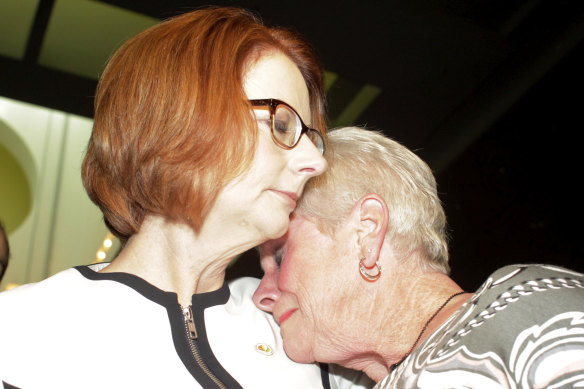
Then-PM Julia Gillard comforts one of the mothers after delivering the national apology to people affected by forced adoptions in 2013.Credit: Andrew Meares
When Arthur’s case against the state finally reached the Queensland Supreme Court in December that year, it was dismissed on the grounds that there was insufficient evidence to prove she’d been coerced into giving her son up for adoption. Justice John Byrne also found that her PTSD and mental health issues blamed on her time in state care had been caused by her dysfunctional childhood.
The ensuing publicity had the benefit of bringing other mothers forward though, mothers with similar horror stories. With an army of equally angry women behind her, she decided to run in the federal election twice in the early 2000s against Chris Bowen, now the minister for climate change, and went on to lobby for a parliamentary inquiry into illegal forced adoption.
In 2012, that inquiry recommended apologies be given by state, territory and federal governments. “I told the [then] attorney general, Nicola Roxon, that they must include the word ‘illegal’ – the apology would not work without it,” says Professor Mushin, who joined Arthur, Bryant and 800 other victims at Parliament House, Canberra on March 21, 2013, to witness Julia Gillard’s landmark national apology.
Meanwhile, as the Victorian government prepares to make one-off payments of $30,000 in reparations, the rest of the country is waiting for the federal government to honour its own recommendations. With the number of survivors reducing each year through age-related illness, cancers, suicides and mental health issues, the fight has become more urgent than ever. ” ‘Sorry’ means nothing without redress,” Arthur says. “And I think this government is deliberately dragging its feet, hoping their problem will quietly die with us. I’m lucky I have a husband who’s done nothing but support me. Because of Des, I went from being a bride to a political activist.”
She is close to her daughter Amanda and her six children. She’s come to accept her relationship with Tim and his four children has a different place in her life. She continues to treasure her friendship with Tim’s father, who still plays lead guitar in a rock band. “When they play on the coast, I go to support him, just as I did when we were young – it’s a lifelong bond.”
For Arthur, the fight remains unfinished business. “In 2021, I made a submission on behalf of Origins to the Scottish parliament in support of their victims who were seeking a national apology that they’ve since received.”
She’s poised to contribute to a BBC documentary about the drug DES.
“Look, love,” she says with a mischievous smile. “I’m still an angry, embittered woman – Professor Mushin reckons I’m the scariest woman he knows … so they’d better look out.”
To read more from Good Weekend magazine, visit our page at The Sydney Morning Herald, The Age and Brisbane Times.